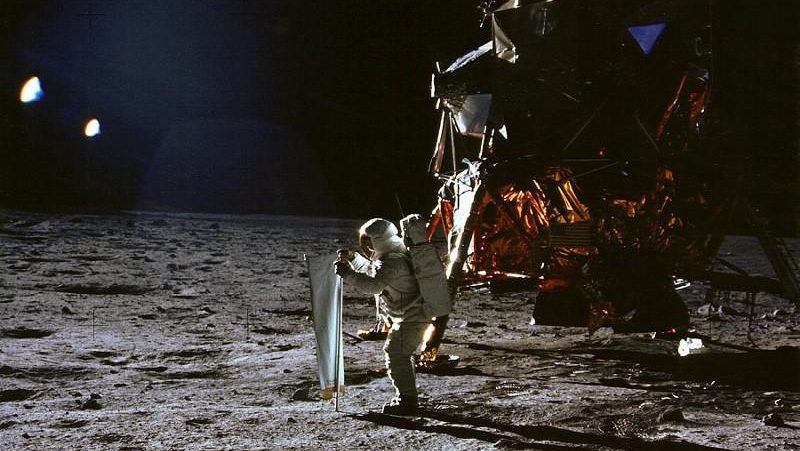Climate science isn’t political. Lying about it is.

What it means that 2016 is the hottest year on record.
“There are now dozens of hockey sticks and the all come to the same basic conclusion. The recent warming does appear to be unprecedented as far bas as we can go. But even if we didn’t have that evidence, we would still know that humans are warming the planet, changing the climate and that represents a threat if we don’t do something about it.” –Michael Mann
The temperature records have been accumulated, analyzed and released for all of 2016. The results? 2016 was the hottest year on record, going back to the beginning of global temperature records in 1880. According to NOAA’s National Centers for Environmental Information, 2016 was 1.69º F (0.94º C) above the 20th century average, breaking the previous record held by 2015, which in turn broke the previous record held by 2014. All told, the annual global temperature record has been broken five times — in 2005, 2010, 2014, 2015 and now 2016 — since the dawn of the 21st century.

As time has gone on, we’ve gotten better at both understanding how warming occurs in the air, on land and in our water, as well as understanding the causes of this warming. What we see for the first is that — on average — the overwhelming majority of temperature rise occurs over the continents. Water, not to be outdone, covers approximately 71% of Earth’s surface, and holds a large amount and possibly even the majority of the total extra heat. The cause, however, is undeniable.

It’s the changes humanity has made to our atmosphere. It’s greenhouse gas emissions. The effects of the Sun, of volcanoes, of pollution and of the sum total all natural causes have been accounted for. Yet the overwhelming majority of the warming is due to the concentrations of three gases in our atmosphere: Carbon Dioxide, Methane and Water Vapor, with the first one being driven almost exclusively by human activity.

The best news we have right now is that the record-breaking streak of temperature records is unlikely to continue in 2017. While the first eight months of 2016 experienced record heat, the end of 2016 brought in a La Niña climate pattern, indicating that 2017 will be cooler than these current records. Nevertheless, 2016 brought with it a number of records, including:
- The globally averaged sea surface temperature was the highest on record, 1.35 degree F above average.
- The globally averaged land surface temperature was the highest on record, 2.57 degrees F above average.
- North America had its warmest year on record; South America and Africa had their second; Asia and Europe had their third; and Australia had its fifth.
- The average Arctic sea ice extent for the year was 3.92 million square miles, the smallest annual average since record-keeping began in 1979.
- The average Antarctic sea ice extent for the year was 4.31 million square miles, the second smallest annual average since record-keeping began in 1979.

The science is very straightforward and there are thousands of scrupulous people who study it, all reaching the same conclusion. The Earth is warming. The warming is severe and continues unabated. There are natural variations in weather and climate over long periods — up to 15 years at a time — but the long-term trend will continue to show warming. And the warming is human-caused and due to our emission of greenhouse gases into the atmosphere. The more we emit, the worse this problem will get.
There are all sorts of arguments we’ve seen in the past and we’re likely to see again from people who would politicize the science; to make it seem like the conclusions or scientific facts lack certainty. They include:
- Cherry-picking a short timescale and showing that there’s no warming (or even cooling) over that time period.
- Citing unscrupulous or contrarian scientists to raise doubts about the validity of the science.
- Looking at individual regions on Earth that are either cooler than average or experiencing ice growth to mask the overall truth about what’s happening to Earth as a globe.
- Making personal attacks against the scientists or science advocates who tell this story.
- Bringing in tangentially related arguments about economic growth and prosperity to divert attention away from the scientific reality.
In the meantime, the effects of climate change not only continue to set global temperature records, but bring devastating consequences to various regions of the world.

Of the 17 warmest years on record, 16 of them have occurred in the 21st century. This is remarkable, considering that we’ve only had 16 full years in the 21st century, with the only outlier being 1998’s then-record year (coming in at #8 today). The record warming we’re experiencing as a planet is not only unprecedented, it’s scientifically undeniable.

Our politicians may deny it. Our corporations may deny it. And even the secretary of state and the president may deny it. But denying it doesn’t change reality. The Earth is warming; we are the cause; the consequences are severe and increasing; it’s up to all of us to do something about it. Even with La Niña in place for 2017, global temperature levels are likely to never sink back to the 20th century average, not for a single year in the 21st century. The Earth belongs to us all, including all the humans who’ll come after us. If we have any hope of taking care of it, it has to start with accepting the truth. Even if it’s inconvenient.
This post first appeared at Forbes, and is brought to you ad-free by our Patreon supporters. Comment on our forum, & buy our first book: Beyond The Galaxy!





